第82章
The period of gestation is, as a matter of fact, determined generally in each animal in proportion to the length of its life.This we should expect, for it is reasonable that the development of the long-lived animals should take a longer time.Yet this is not the cause of it, but the periods only correspond accidentally for the most part; for though the larger and more perfect sanguinea do live a long time, yet the larger are not all longer-lived.Man lives a longer time than any animal of which we have any credible experience except the elephant, and yet the human kind is smaller than that of the bushy-tailed animals and many others.The real cause of long life in any animal is its being tempered in a manner resembling the environing air, along with certain other circumstances of its nature, of which we will speak later; but the cause of the time of gestation is the size of the offspring.For it is not easy for large masses to arrive at their perfection in a small time, whether they be animals or, one may say, anything else whatever.That is why horses and animals akin to them, though living a shorter time than man, yet carry their young longer; for the time in the former is a year, but in the latter ten months at the outside.For the same reason also the time is long in elephants; they carry their young two years on account of their excessive size.
We find, as we might expect, that in all animals the time of gestation and development and the length of life aims at being measured by naturally complete periods.By a natural period I mean, e.g.a day and night, a month, a year, and the greater times measured by these, and also the periods of the moon, that is to say, the full moon and her disappearance and the halves of the times between these, for it is by these that the moon's orbit fits in with that of the sun [the month being a period common to both].
The moon is a first principle because of her connexion with the sun and her participation in his light, being as it were a second smaller sun, and therefore she contributes to all generation and development.For heat and cold varying within certain limits make things to come into being and after this to perish, and it is the motions of the sun and moon that fix the limit both of the beginning and of the end of these processes.Just as we see the sea and all bodies of water settling and changing according to the movement or rest of the winds, and the air and winds again according to the course of the sun and moon, so also the things which grow out of these or are in these must needs follow suit.For it is reasonable that the periods of the less important should follow those of the more important.For in a sense a wind, too, has a life and birth and death.
As for the revolutions of the sun and moon, they may perhaps depend on other principles.It is the aim, then, of Nature to measure the coming into being and the end of animals by the measure of these higher periods, but she does not bring this to pass accurately because matter cannot be easily brought under rule and because there are many principles which hinder generation and decay from being according to Nature, and often cause things to fall out contrary to Nature.
We have now spoken of the nourishment of animals within the mother and of their birth into the world, both of each kind separately and of all in common.